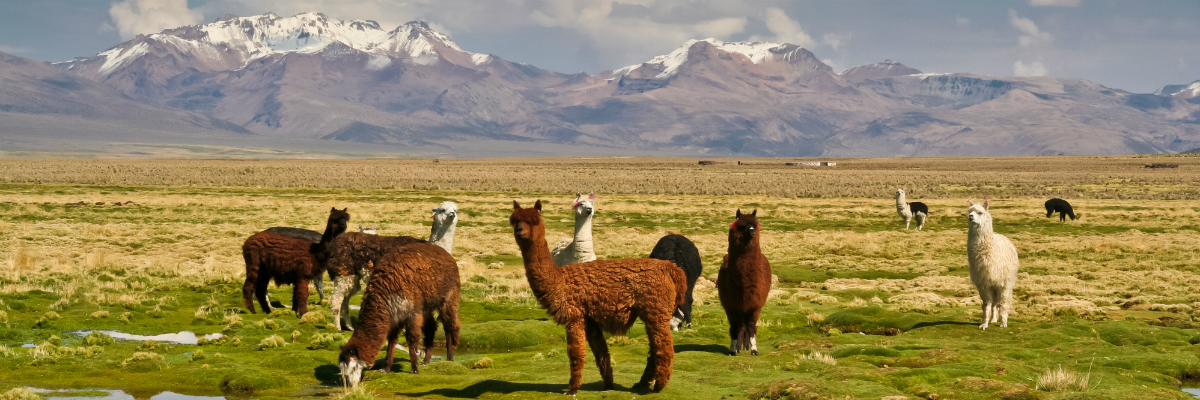
Alpacas live in the peruvian highlands of the Andes, where they were domesticated thousands of years ago, in the days of pre-Inca cultures. The alpaca fiber was reserved for dignitaries of high society. Today, alpaca is a luxury fiber. Although not widespread, it is used by the most renowned fashion designers.
It is estimated that there are between 3.5 and 4 million alpacas in South America, and about 95% of them are found in the southern region of Peru. They live at altitudes ranging from 3000 to more than 4500 meters, where they are able to withstand temperatures that fluctuate between -20 to +30 degrees C in the same day, and where they manage to survive thanks to a low diet in protein, based on the vegetation of the Andes. This diet, like altitude, is a guarantee of the quality of wool.
Alpaca wool is rarer than cashmere, seven times warmer than sheep's wool and three times lighter. This silky, flexible and durable fiber has unique thermal properties due to the microscopic air pockets that it is composed of. These air pockets allow the body to breathe in hot weather, but also to trap body heat in cold weather.
The color of the yarn is available in more than 24 natural shades, ranging from white to black, including all shades of gray, beige and brown. To these original colors are added other color shadings, mixed into these natural colors.
The Baby Alpaca fiber, taken from the softest parts of the animal, such as the neck, has a luxuriously soft touch. The absence of lanolin makes its texture hypoallergenic, it is therefore tolerated by the most sensitive skins such as those of people allergic to sheep's wool or babies.
Alpaca is one of the most resistant of animal fibers. With careful maintenance, alpaca textiles are very resistant over time, keep their appearance and their hold for years.



